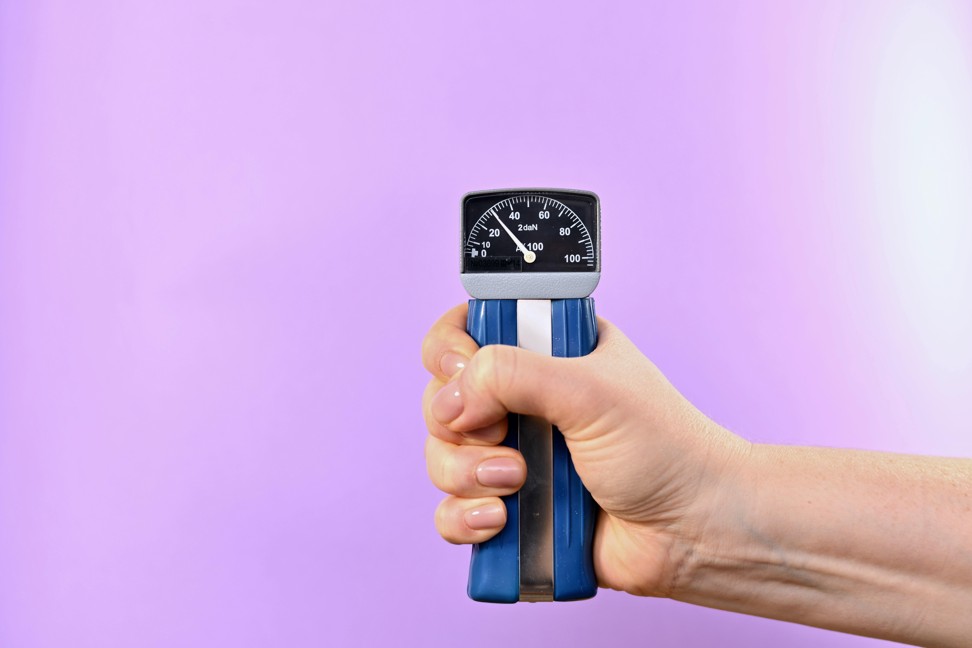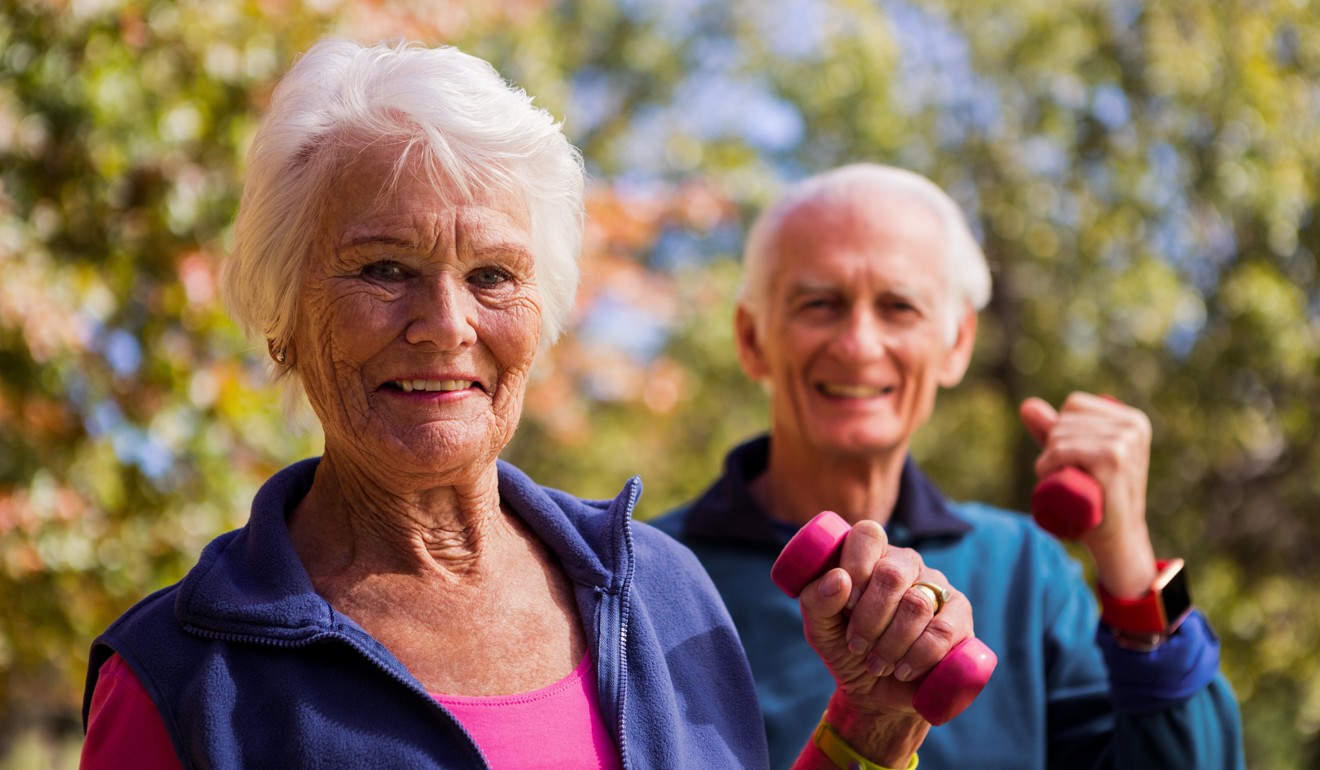
How health is reflected in a Donald Trump-style strong hand grip, and it’s linked to your resistance to disease
- Grip strength is a good indicator of general health, especially among the elderly
- Studies point to a link between lower grip strength and heart and lung disease and various types of cancer

US President Donald Trump’s odd, grabbing handshake aside, people have long judged each other by the firmness of their handshake. A strong grip generally conveys confidence or even power, while a limp grip sometimes comes across as disengaged or weak.
But recent studies indicate that grip strength can reveal far more than your personality; it can serve as a window into how healthy – or unhealthy – you are. And as you age, experts say, your grip strength can be a measure of how likely you are to develop and survive diseases such as cancer, heart disease and more.
A 2016 systematic review of many studies involving people 60 and older found that grip strength “has a predictive validity for decline in cognition, mobility, functional status and mortality”.
Experts say that hand-grip strength works as a stand-in for measuring general body strength and muscle mass, which declines with age. The advantage of measuring grip strength as a marker of health, say researchers, is that it is affordable and convenient, key for rural and other populations that may not have easy access to medical care.

“It’s not a perfect measure of overall muscle strength, but a good one,” since loss of muscle mass is linked to many diseases, and as early as mid life, grip strength can be an indicator of disability later in life, says Stuart Gray, lecturer in exercise and metabolic health at the University of Glasgow’s Institute of Cardiovascular and Medical Sciences in Scotland who focuses on age-related loss of muscle mass.
To measure grip strength, researchers use a simple US$200 device called a dynamometer. Subjects squeeze it to reveal the amount of force applied. “It takes five to 10 minutes to train someone to use the device,” Gray says, “so it’s an easy application.”
Gray was one of the co-authors of a 2018 study that found hand-grip strength was “strongly associated with a wide range of adverse health outcomes”.

The research found an association between lower grip strength and higher incidence of cardiovascular disease, chronic obstructive pulmonary disease and various types of cancer, including colorectal cancer, lung cancer and breast cancer.
The study used information from 500,000 people age 40 to 69 who enrolled in the UK Biobank, which collects data to investigate genetic, nutrition, environment and other factors affecting health.
“We knew that lower muscle strength is linked to higher morbidity,” Gray says, “but we think it has an underappreciated role in health. We wanted to probe this more deeply in a large cohort of people to see if it was associated with more conditions.”

“Muscle strength is an indicator of your ability to withstand diseases,” says Darryl Leong, a cardiologist with the Population Health Research Institute at Hamilton Health Sciences and McMaster University in Canada.
“When you are stronger and you become ill, you have reserves that you can draw on to help fight the disease,” he says. “Without muscle strength, your odds are significantly poorer.”
Leong says that becoming frail is often considered an inevitable part of ageing. With this research, he says, “we challenge this belief because we have observed many younger adults who are frail and many older adults who are not”.
Leong is leading a continuing study of about 142,000 people in 17 countries that uses their grip strength to evaluate the likelihood of heart attack, stroke or death from cardiovascular disease.
“Our research indicated that low muscle strength is associated with a higher risk of dying, first and foremost,” Leong says. It also found that grip strength was a stronger predictor of mortality than blood pressure.
Leong’s research suggests for each 11-pound (5kg) decrease in grip strength there is a 16 per cent higher risk of dying from any cause, a 17 per cent risk of dying from heart disease, a nine per cent higher risk of stroke and a seven per cent higher risk of heart attack.
The results and observations on frailty not specifically tied to age suggest the need for more research, Leong says.
“We need to understand the ingredients that lead to successful ageing with preservation of strength,” he says. “We hope that a successful approach to preserving muscle strength will lead to a reduced risk of death and disability.”

While both researchers tied grip strength as a measure of overall muscle strength to disease outcomes, they agree the reason for that isn’t so clear.
The question that remains is whether it is the result of genetics and other factors or the result of not staying fit and active.
“We observed variations in muscle strength among different ethnicities,” Leong says. “Is this genetic or is it a reflection of the environment in which you grow up and the diet that you eat? We want to figure that out and help prevent a loss of grip strength.”
Gray hypothesises that grip strength comes down to 50 per cent lifestyle and 50 per cent genetics. “We don’t know all the factors that come into play and grip strength doesn’t necessarily change with exercise,” he says.
Exercise and activity, however, cannot be discounted, Leong says. “It’s the adage of ‘use it or lose it’,” he says. “Resistance training and strength preservation should be part of the routine as you age.”
That doesn’t mean you should train your grip strength specifically, however.
“Just improving grip strength will not improve your overall health,” Gray says.
Cathleen Colon-Emeric, head of the geriatrics division and associate dean for research mentoring at Duke University School of Medicine in North Carolina, says: “We should consider grip strength as an overall bio-marker of health, and improving it by itself will not lead to improved outcomes.
“Instead, we should focus on maintaining or improving muscle mass, which greatly reduces the risk for many conditions.”